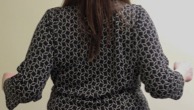Forward head posture is a spinal alignment problem that occurs when a person’s head routinely sits in front of their shoulder. It is estimated to be as prevalent as 66% of the population affecting persons of all age groups and both genders.


Forward Head Posture Good Postural Alignment
Forward head posture is associated with increased neck pain, headaches, temporal mandibular (jaw) joint dysfunction, and decreased neck mobility.
Common risk factors associated with developing forward head posture are as follows:
- Frequent smartphone use using forward bent neck position,
- general computer use especially if the monitor is too high or too far away,
- wearing progressive, bifocal, or trifocal lenses that require the person to lift the chin to look through the bottom of the lenses when viewing a computer screen,
- working at a computer in a recumbent posture without adjusting the monitor position,
- sitting in a chair with little lumbar support and allowing your lumbar curve to flatten
- advancing age, and
- increased thoracic kyphosis (a greater backward curvature of the thoracic spine).
So, what can be done to avoid or correct forward head posture?
- Support elbows on a work surface or on armrests to bring smartphone closer to eyelevel. Avoid composing long emails on the smartphone.
- Ensure that your monitor is positioned properly. A single screen should be approximately an arm’s length away with the top of the screen located just below eye level for comfortable viewing. However, if you wear progressive lenses the monitor likely needs to be lower so that you can view the top 1/3 of the screen while maintaining a neutral neck alignment. Dual screens should be approximately an arm and a half’s length away from the user when comfortably seated.
- If you wear bifocals, trifocals, or progressive lenses, you may want to also consider computer glasses that have a larger more centrally located intermediate lens to reduce the need to look up while viewing intermediate distance items such as a computer screen.
- Avoid reclining your chair more than 100 degrees while working or ensure that you adjust your screen to compensate for your reclined position.
- Ensure that you have adequate lumbar support.
- Perform postural correction exercises as follows:
Chin Tuck
| Purpose:
To stretch the small muscles at the base of the |
|
Instructions:
|

|
“W’ Stretch
| Purpose:
To stretch the pectoral muscles on the front of the chest to help improve posture and relieve discomfort |
|
|
Instructions:
|

|
If you have questions about this or other topics, feel free to contact EWI at info@ewiworks.com
References:
Bansal S, Katzman W, Giangregorio L. Exercise for Improving Age Related Hyperkyphotic Posture: A Systematic Review. Arch Phys Med & Rehab, 2014; 95: 139 – 140
Diab AA, Moustafa IM. The efficacy of forward head correction on nerve root function and pain in cervical spondylotic radiculopathy: a randomized trial. Clinical Rehabilitation 2012; 26: 351 – 361
Fernandez de la Penas C, Cuadrado ML, Pareja JA. Myofascial Trigger Points, Neck Mobility, and Forward Head Posture in Episodic Tension Type Headaches. Headache, 2006; 47: 662 – 672
Horton SJ, Johnson GM, Skinner MA. Changes in Head and neck Posture Using an Office Chair With and Without Lumbar Roll Support. SPINE 2010; 35 (12): E542 – E548
Harrison DD; Harrison SO; Croft AC; Harrison DE; Troyanovich SJ. Sitting Biomechanics part 1: review of the literature…J Manipulative Physiol Ther, 1999; 22 (9): 594-609
Lau KT, Cheung KY, Chan KB, et al. Relationship between sagittal postures of the thoracic and cervical spine, presence of neck pain, neck pain severity and disability. Man Ther, 2010; 15: 457 – 462
Quek J, Pua YH, Clark RA, et al. Effects of thoracic kyphosis and forward head posture on cervical range of motion in older adults. Man Ther, 2013; 18: 65 – 71

